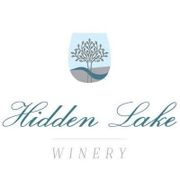
Wine features many flavors that depend on factors like grape quality, the kind of storage container it’s been kept in, and when it was bottled. However, some additional characteristics of this fruity beverage can help describe what you’re drinking and which varieties you like. Here are five aspects to observe while enjoying a glass.
How to Analyze Wine
1. Alcohol Content
Wine is usually served in 5-ounce glasses. On average, the alcohol by volume (ABV) ranges from 11% to 13%, with a few outliers. For example, red varieties are often 12% to 15% ABV. Moscato is on the lower end—between 5% and 7% ABV—while shiraz and zinfandel can reach 18% ABV.
2. Sweetness
When tasting wine, you likely first notice the sweetness because the tip of the tongue registers this flavor note. This beverage may have an initial sweetness or a residual, lingering hint of sugar. You may spot a high-sugar content if the liquid seems syrupy or oily. Bone-dry varieties like pinot grigio can have zero sugar, while very sweet options like port have up to 220 grams of sugar per liter.
3. Acidity
 This feature brings out the fruit flavors, so wineries might add tartaric acid to the grapes before fermenting them to cultivate a more acidic taste. White wines may make your mouth feel tingly near the front and sides of the tongue since these taste buds register sour flavors. People who don’t like tart beverages may prefer reds because they have lower levels of bitterness.
This feature brings out the fruit flavors, so wineries might add tartaric acid to the grapes before fermenting them to cultivate a more acidic taste. White wines may make your mouth feel tingly near the front and sides of the tongue since these taste buds register sour flavors. People who don’t like tart beverages may prefer reds because they have lower levels of bitterness.
4. Body
At a tasting, sommeliers will mention body when talking about how the beverage feels inside the mouth—light, medium, or full. If you taste a lot of grapes and richness, like in a shiraz or zinfandel, you might call the glass full-bodied. These options also have high alcohol counts, usually above 13.5% ABV. Light-bodied wines, such as prosecco or riesling, may be described as more watery and have around 8% to 12% ABV.
5. Tannin
Many people know tannin as the residue floating near the bottom in a glass of red wine. These compounds are called phenolics and have a bitter taste because they contain a mix of oxygen and hydrogen. Tannin is found in grape skins, grape seeds, and the oak barrels that store the liquids. Varieties like sagrantino, which have a lot of tannins, are more astringent and dry-tasting than merlot or cabernet sauvignon.
If you’re interested in trying delicious wines to deepen your understanding of their characteristics, visit Hidden Lake Winery in Clinton County, IL. Each bottle is made with locally grown fruit and processed on-site in their cellar. Call the Aviston-area winery and event venue at (618) 228-9111 or visit the website for information on their menu for dinners and tastings.
About the Business
Have a question? Ask the experts!
Send your question

